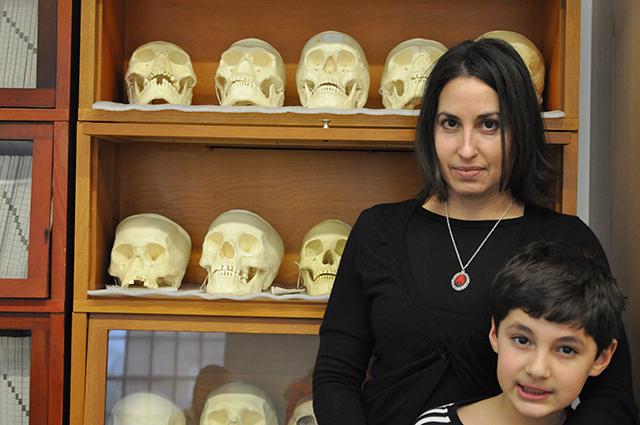It turns out that our skulls can do a whole lot more than just protect our brains from rattling around.
Ann Ross, a professor of sociology and anthropology, and a team of researchers are working on a study, which with the help of the coordinates of our skulls, would determine key markers about who we were before we died.
Using data from CT Scans that is then incorporated into a growing forensic database, the study’s findings can help determine the ancestry and sex of unidentified remains.
“This project came out of a larger project that we had funded by the National Institute of Justice,” Ross said. “We developed software that you can take, for example, an unknown skull, take 3-D coordinates and plug it into the software that we developed. It will tell you the biological sex of the person and what ancestry they are.”
According to Ross one of the things they were originally looking for when they began the study was a way to use coordinates from CT scans verses a process of digitalizing each dry skull.
“We didn’t know if the landmarks would be comparable or not,” Ross said. “We assumed that they would but when you take the coordinates they would be in a different plane. Here you are using a stylus to get the landmarks off of the dry skull and it’s sitting in space where as on a computer with a CT scan, you’re using computer software to extract those X, Y and Z coordinates.”
The study, A Geometric Morphometric Validation Study of Computed Tomography Extracted Craniofacial Landmark, has been published in the January issue of the Journal of Craniofacial Surgery with the help of Amanda Hale, a former student of Ross’ and lead writer of the paper.
Ross said they found eight bilateral coordinates—on either side of the skull—that were both consistent with the CT scans and the manual mapping.
However, the five middling coordinates found showed inconsistencies between the CT scans and manual mapping, according to Ross.
“It was really strange,” Ross said. “I suspect the ones that have bilateral measurements, maybe, might help set the landmarks better. That’s one thing that we’re going to keep exploring.”
With the help of the University of Pennsylvania and a former colleague, Ross received a digitalized copy and CT scan of 48 new skulls.
“They had a big project where they scanned about 2,000 skulls from all over the world,” Ross said. “We were able to associate the same skull with the CT of that skull. If we were just comparing you would be able to see human variation and you wouldn’t be able to see that there’s really a difference.”
According to Ross, the database grew as they received more skulls, which expanded their reference population.
“We’re bringing these populations together,” Ross said. “We have broken them down into European American and into European. Now we will be able to break them down into Western, Eastern and Southern European.”
Ross said the skulls are grouped as Mesoamerican, Circum-Caribbean, South American and African American.
“We made it free because it was funded by the National Institute of Justice,” Ross said. “It’s made available for all of the forensic community.”
Already using the database to help other members of the forensic community from around the world, Ross said a colleague of hers in France needed help with an unidentified body found in France.
“Europe is really high-tech and most of their medical examiner’s offices have, as part of their standard practice CT Scans, which is uncommon here in the U.S,” Ross said. “I asked her to send me a CT Scan and once she did I was able to extract the coordinates. I was able to put it in our software program and give her information about the person.”
According to Ross, it would help the database grow immensely if they could get access to medical CT Scans.
“If we can get access to medical CTs that would increase our sample sizes for studies,” Ross said. “One of the things we were looking at is, because a lot of people do plastic surgery and craniofacial surgery, people with genetic disorders. I think knowing that you can take these coordinates from CT Scans and which ones are actually consistent with the dry skull, would let clinical practitioners know which ones they should be looking at in order to make those decisions.”
Ross said that with this study there is plenty of promise.
“Our bones say a lot about us that we don’t know,” Ross said. “We can get a compete profile from you. When we look at the bones we have to develop a whole biological profile.”
Ross said through bones she can tell someone’s previous diseases, height or age when he or she died, how tall
3D-ID, the name of the skull recognition software, can be downloaded for free from the software’s website www.3d-id.org.








